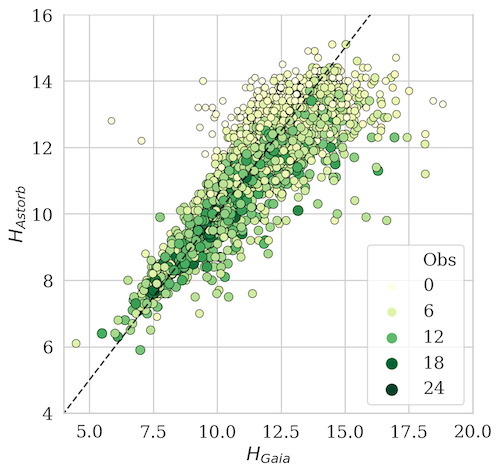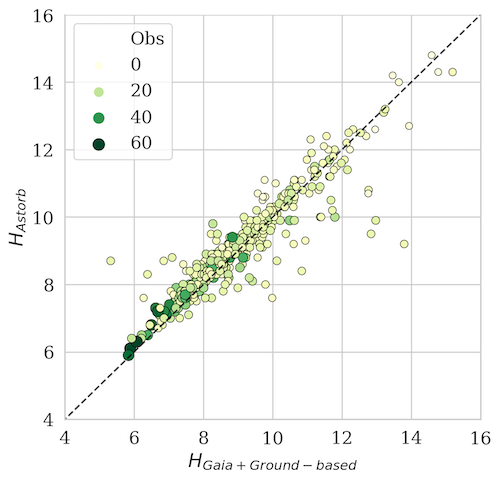Asteroid Terrestrial-impact Last Alert System (ATLAS) is an all-sky survey consisting of two Schmidt telescopes located at on Haleakala and Mauna Loa in Hawaii. The telescopes have 65-cm primary mirror, f/2.0, and the field of view is 7.5 deg. They cover the whole visible sky during one night down to ~19 mag with 30 s exposures [1]. Apart from astrometric data, the system also produces photometric measurements that contain information about asteroid rotation.
We used ATLAS photometry that was available for approximately 180,000 asteroids observed between 2015 and 2018 to derive asteroid rotation periods. Most of observations were done in orange (560-820 nm) and cyan (420-650 nm) filters. We fitted the data with an ellipsoidal shape model scanning rotation periods between 2 and 1000 hours. For each asteroid, we obtained the best-fit period and corresponding orientation of the spin axis and elongation of the ellipsoidal shape model. However, the best-fit period (corresponding to χ2 minimum in the periodogram) was in most cases just random period that was not reliable because the number of data points was small or the lightcurve amplitude was lost in noise.
To test how reliable the determined periods were and how sensitive they were to the actual data sets, we repeated the period scan with many bootstrapped samples of original data and each time derived a new best-fit period. Reliable period determinations had all these periods the same, while unreliable determinations had different periods for different bootstrapped samples.
To check a typical rate of false positive solutions, we compared the periodogram results with periods reported in the Lightcurve Database (LCDB) [2] and with an independent analysis of ATLAS data [3]. From roughly 100,000 asteroids with more than hundred individual brightness measurement, we were able to uniquely and reliably determine rotation periods for thousands of them. For other thousands, their periods were likely correct but with less certainty.
We present the analysis of correlations between the number of data points and likelihood that the correct period was found. We estimate that by this approach, much larger number of periods can be determined when additional ATLAS or another survey data are available.
[1] Tonry, J. L., Denneau, L., Heinze, A. N. et al. (2018): ATLAS: A High-cadence All-sky Survey System, PASP 130(6), 064505.
[2] Warner, B. D., Harris, A. W., and Pravec, P. (2009): The asteroid lightcurve database, Icarus 202, 134.
[3] Erasmus, N., Navarro-Meza, S., McNeill, A. et al. (2020): Investigating taxonomic diversity within Asteroid Families through ATLAS dual-band photometry, ApJS 247, 13.



